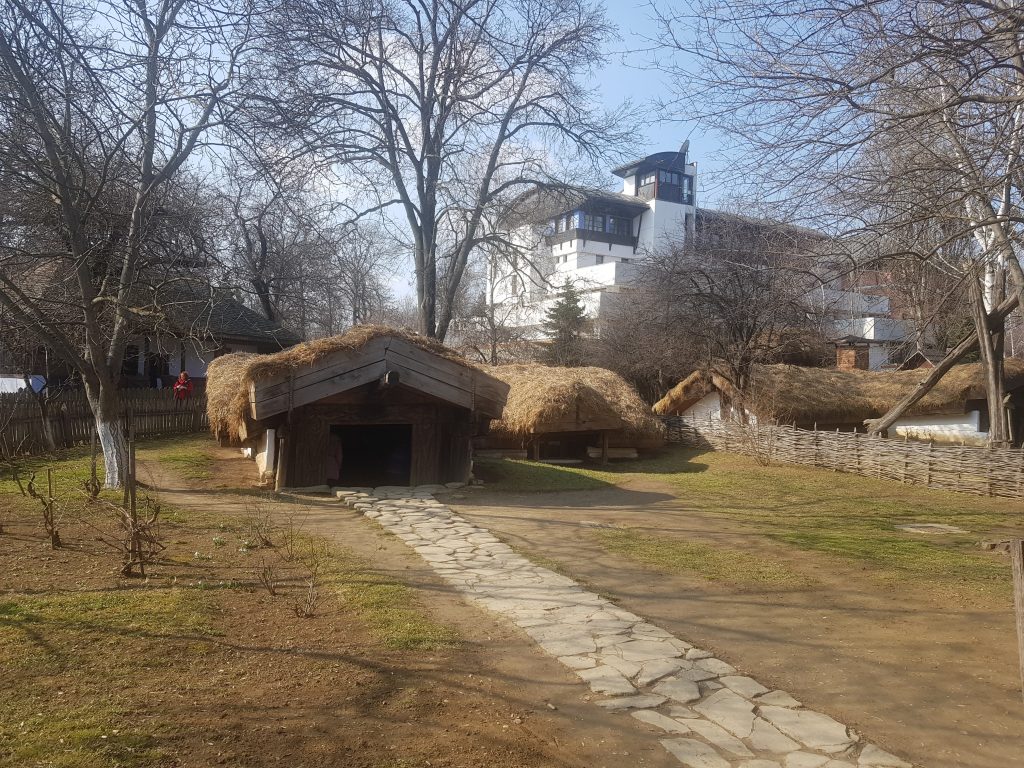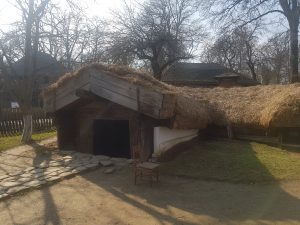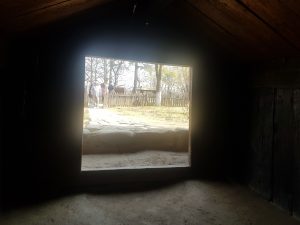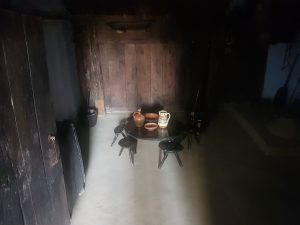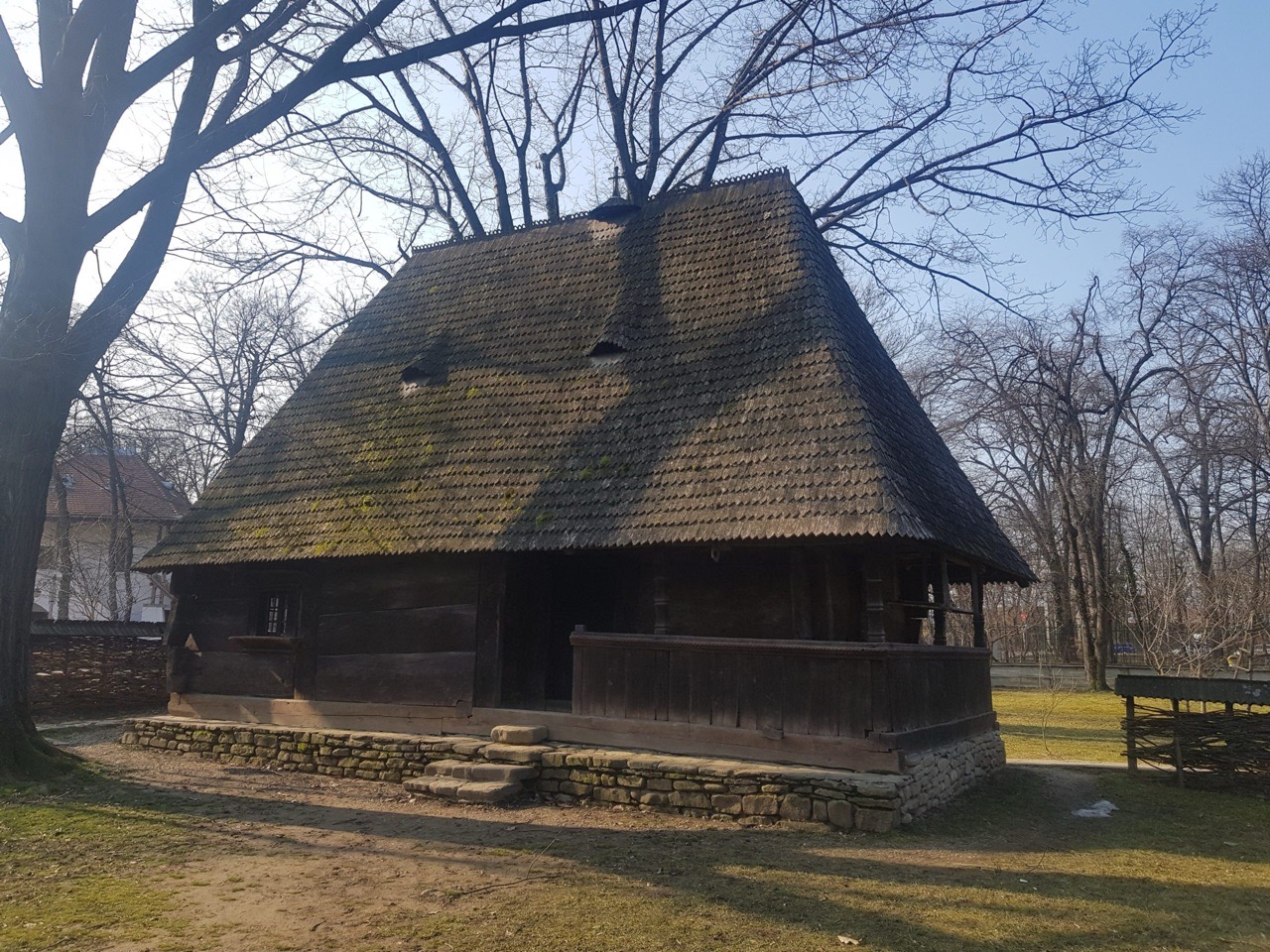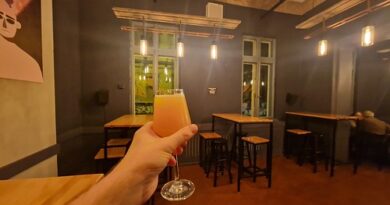Bucharest – National Village Museum (Half Buried House)
This half-buried house dates to the beginning of the nineteenth century and it was brought to the museum in 1949 from Drăghiceni, a town in the south-west of Romania. There are two functions to this sort of property, with the primary one being that this helps with keeping the temperature under control, so it would preserve the cold in summer, but also the warmth in winter. I’d note that Ibis have some hotels like that, although they preserve the heat in winter and the heat in summer, which can be most annoying. There was also a defensive element as well though (to the half-buried house, not Ibis), there were occasional Turkish raids and this sort of property was easier to defend. It wasn’t though a cheaper construction option, as building a half-buried property apparently uses more wood than building a traditional structure.
This house was popular with children at the museum, who enjoyed climbing down into the property. The roof was constructed with oak planks and there would be a straw type finish on the top.
That’s the step down.
And there’s the entrance room. Behind this would have been the kitchen, and further into the structure would have been the living room. It seems to me to be quite a fun place to live as well, something a little different.

